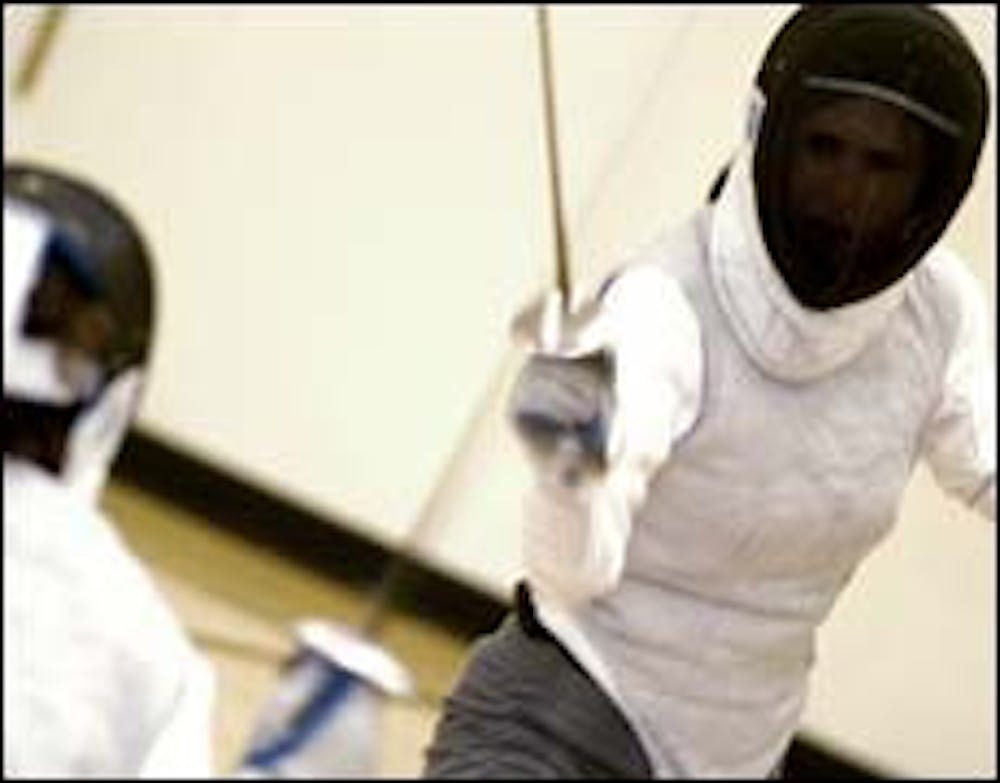Any student who has ever fantasized about sword fighting like the heroes and heroines in movies can find a place to learn the sport of fencing at ASU.
"Fencing is in a lot of movies and cartoons," ASU fencing coach Donna Landers said. "I think it's a childhood fantasy to be able to fight like that, and they think it's glamorous and romantic."
Landers has taught fencing classes since 1982. She teaches the students in her ASU classes three different types of fencing used in Olympic competition: foil, epée and sabre. Each style of fencing uses a different type of sword and a different set of rules.
"Fencing is like physical chess," Landers said. "It tests your ability against the other person, and you have to set it up so you can score."
ASU also has its own fencing club, Salle Diablo, which has been on campus for 23 years.
Fencing has roots in early Renaissance sword battles when it was taught as a survival skill. Arguments typically were settled using a sword.
As the form of the sword evolved to lighter versions like the rapier and the foil, fencing schools called "salles" formed to teach the proper techniques for thrusting the sword, rather than cutting.
Salles today use a blunt form of the foil so teaching is easier and safer for those involved. Many salles, including Salle Diablo, attach cords to the contestants' fencing jackets that sense when the person's jacket receives a hit. Electric fencing allows judges to score competitions more easily.
According to Salle Diablo coach Jim Barbour, fencing has grown as a competitive sport in the last four years.
"Four years ago, the number of fencers was pretty stable at about 80,000, but now with the Internet, you can find fencing clubs everywhere," Barbour said. "It also has a rich tradition that you don't get from other sports."
Barbour said some members of Salle Diablo competed against 5,000 other fencers and received three medals in sabre at the national competition earlier this month in Austin, Texas.
Students who take the class or who are in the club do not have to have any experience fencing, but Landers' students are not allowed to be in the club as long as they are in the class, sociology senior Lauren Smoller said.
"In the class, we learn the proper form, and the club sort of reinforces bad habits and maneuvers that are not condoned by Olympic rules," Smoller said. "The club is more like sword fighting, not fencing."
Landers said she hopes to teach the students to get along with others and to have self-confidence.
"The students come away with a feeling that they can do something that a lot of other people can't do, and they know you have be fit and be able to think," she said. "It's a good sport because it brings together people from all walks of life, all nationalities and majors, and it's a sport you don't have to be young to enjoy."
Industrial engineering junior Gina Dumkrieger, president of Salle Diablo, said the club also accepts people who are not students at ASU.
"We have about 25 regulars and 10 who are really experienced," Dumkrieger said. "It's really good to get the people who aren't students because you get tired of fencing the same people, and you can only get better by fencing better people."
Salle Diablo meets in the Student Recreation Center Tuesdays and Thursdays from 8 p.m. to 11 p.m. and Saturdays from 2:30 p.m. to 6 p.m.
Reach the reporter at brittany.woodruff@asu.edu.




